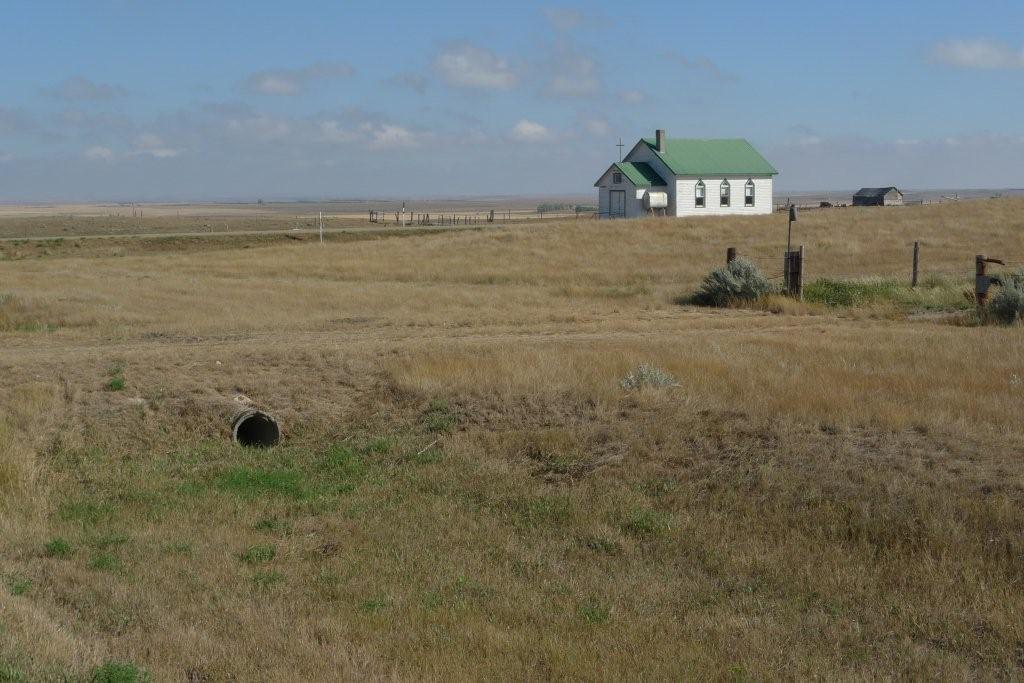
By: Alexandra Pratt
“The prairie, it just seeps into your soul.” says the woman from Saskatchewan. But the allure of the prairie is a well kept secret. Before my husband, Stuart, and I leave Calgary, people keep telling us we were heading in the wrong direction. “Go west, to the Rockies!” they cry, mystified. Stubbornly however, we drive east, away from the setting sun, which gives the hidden buttes and gullies of the plains life; seductive forms in the soft, warm light.
Because the thing about the prairie is, it isn’t really flat. Nor is it devoid of life. Wild red samphire pools like blood in coulees, golden eagles soar in the cloudless skies, and pronghorn antelope bound away delicately at howl of a coyote. We drive and drive, until the satnav claims we have fallen off the ends of the known earth….
A hundred and fifty years ago, this Canadian prairie was a sea of grass, supporting millions of large animals and native plants that rivalled the African savannah. Today however, just 1.5% of this incredible landscape is protected, making it some of the rarest habitat in the world. Not that there is much sign of that when we arrive at the tiny town of Val Marie on the edge of the Grasslands National Park to get our camping permits and, worryingly, give details of our next of kin. While the wild bison may be the headline grabbers in this place, it’s the black widow spiders and the rattlesnakes that are the real threats to campers and hikers like us.
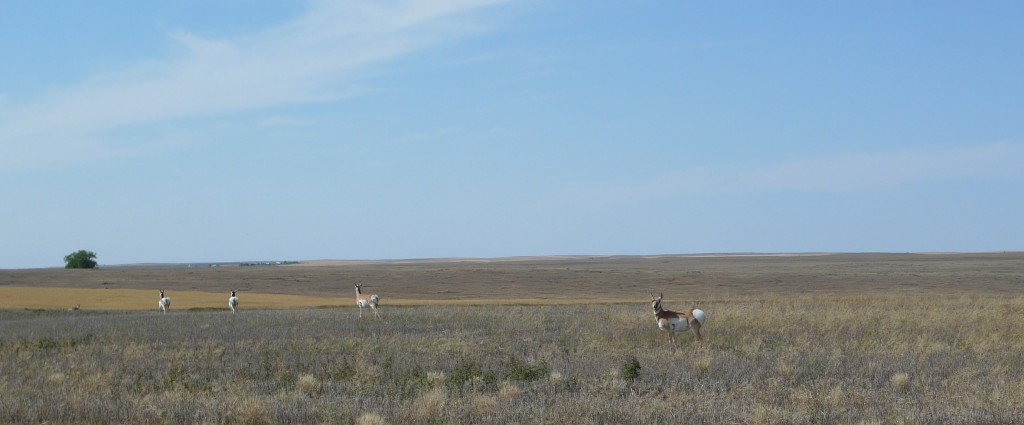
Dinosaur remains have been found here in the ‘badlands’, and big predators like wolves, grizzlies and cougar once roamed freely. Now, there are all gone, but there are plenty of other rare animals. The grasslands are filled with unusual species such as black tailed prairie dogs, ferruginous hawks and the eastern short-horned lizard. Even before we reach the park boundary, we see two golden eagles feeding by the side of the gravel highway and they take off unhurriedly when we stop to watch, their 8ft wingspan quickly disappearing into the immensity of the prairie skies.
Our 4×4 crawls along a dusty rack that is barely distinguishable from the sun-scorched late summer grasslands. ‘Dog Town’ as it’s called, isn’t far into the park, but it would be easy to miss if we didn’t have all the windows wound down. A crescendo of chirrups, barks and squeaks rises towards us, and several dozen sand coloured creatures scurry into wide mouthed burrows.
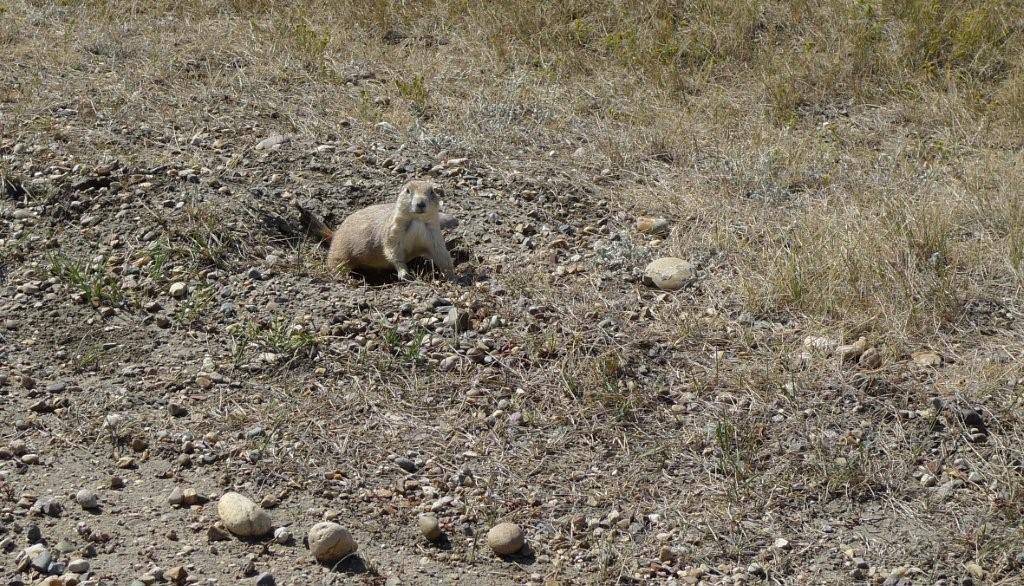
These are the black-tailed prairie dogs, one of Canada’s rarest animals. A type of gopher, about 16” long, they live in big underground communities and are very sociable, grooming, chatting and guarding each other. They’re quite bold too, as it is only a few minutes before they cautiously re-emerge from their burrows to take a good look at us and pose for the camera!
Unfortunately for the prairie dogs, they are on the menu for almost everything else here, from snakes to hawks, but one of their biggest predators is the coyote, and that’s what we’ve come to see. The best way to do this is to camp, and as there are no facilities whatsoever in the Park, this means we have to take everything – even water – in backpacks and hike deep into this wilderness.
It’s a warm evening as we hike across a dry valley to the north of the brackish Frenchman River. The coulees, gulches and buttes here have been home to nomadic Indians for centuries and hid illegal whiskey traders in the 1930’s. They even gave shelter to the Plains Indian Chief Sitting Bull, when he fled the retribution of the American Army following their defeat by his braves at Little Bighorn, Montana in the late 19th century.
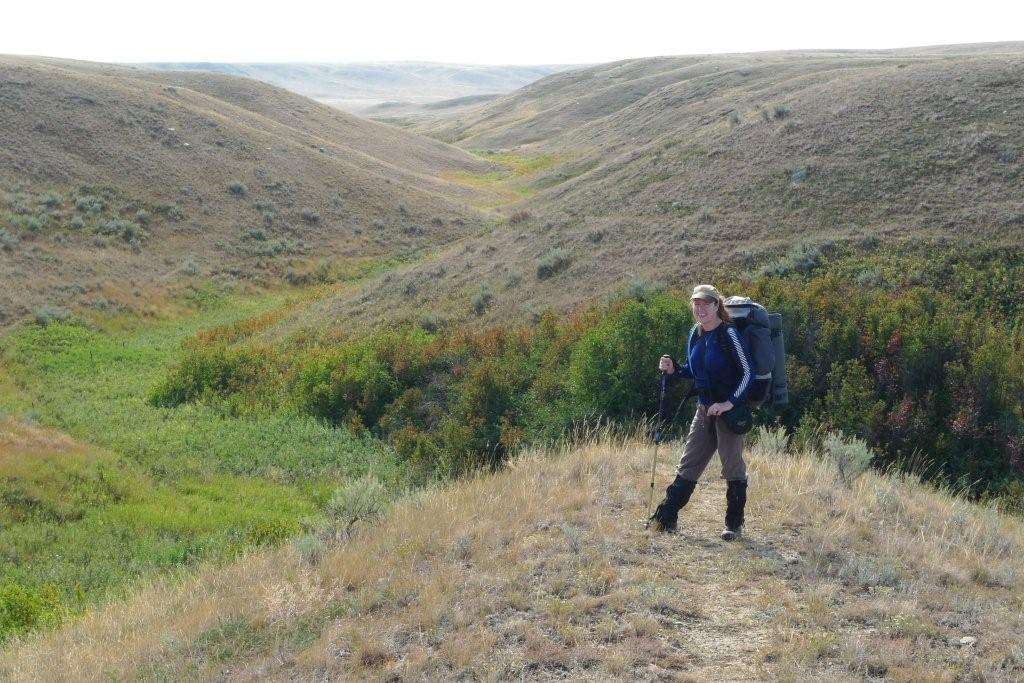
Bluffs rear up out of the landscape around us, shadowing deep valleys that change with the light through day and evening. These deceptive shape shifters are dangerous; it is so easy to get lost in this terrain.
Our camp is on the side of one of these bluffs and as we finish our supper and sip our coffee by the flap of our tent, we can see the golden light on the tablelands, where the light is being sucked away to the west. It leaves an almost gun-metal sky, like the purple grey of an approaching storm, yet entirely cloudless. A stand of trees bite like a single tooth into the livid scar above the horizon. On the other side of the valley, an old homestead stands empty and abandoned, with, a tangle of weeds twisting up through the buckled clapboarding, which is sinking drunkenly sideways; pushed over by the weight of winter snows.
The following morning, I had feared waking to find we were surrounded by a herd of wild bison, but luckily Stuart’s shout of “Bison!” as I’m struggling out of my sleeping bag, indicates that he has found them with his binoculars, several kilometres away. Later that day, we do – very cautiously – get a little closer to these massive beasts. I’m very careful however, in this land of no fences (not that there is a fence made that could hold an angry bison) to observe the ‘thumb rule’, which says that is if you hold your thumb out at arms’ length, the bison should never appear bigger than it.
Even at this distance though, the herd are impressively huge and shaggy, and the protective male has an aura of short-tempered menace that certainly checks my curiosity!
That evening, we choose a different place to camp; high up, with a spectacular view of the valley. Even at this time of year, it’s hauntingly beautiful. Subtle, but addictive. There’s an irony too; in these endless horizons and big skies, beauty is often on a miniature scale whether it’s a rare wildflower or a glimpse of a peregrine falcon. But it’s not just visual; there is also the soundscape of the prairie; the gunshot call of the sage grouse, the constant click of moth’s wings on a zephyr, and the resinous scent sage brush rising through the calm of the twilight.
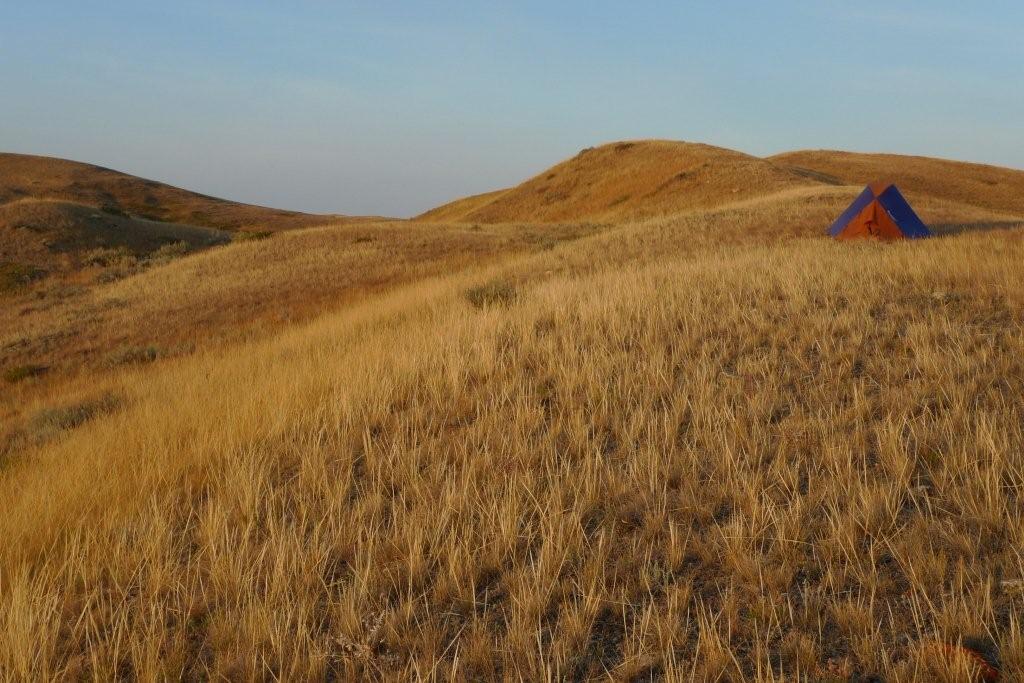
Later that night, my eyes flick open and strain uselessly into the unrelieved darkness. The ever-present prairie wind has dropped away and all is so still in our little tent, that I think I was dreaming. Then, I hear it again. At first it is in the distance, but gets louder – or nearer. A long howl, rising and falling, quickly joined by others, and together they crash into a wild cacophony of yelps, yips and barks that seems barely a hundred meters away.
The sound is eerie, primeval, and I wonder how many humans through millennia have lain in the dark just like this, listening to a pack of wolves hunt through the night, and shivered.
“Are you awake?” I ask Stuart, trying to fumble silently for the torch next to my sleeping bag.
“Of course.” he responds, placing a restraining hand on mine. “Just listen.”
I’m still again, totally blind in the darkness, every sense useless except my ears, attuned to the rise and fall of the cries. Our tent may as well not exist, as I have no sense of it separating us from what lies beyond its flimsy walls. The howl begins again, one joined by another and another, then falling into a strange yi-yi-yi noise that echoes across the wide valley below, across the immensity of the earth and up to the very heavens. It’s the true sound of the wilderness.
I lean forward and ease open the fly-sheet. There’s no moon, but the night is filled with stars like a million scattered diamonds, and the light is just enough for me to make out the gentle sweep of the river across the salt flats below.
Stuart puts a hand on my shoulder and breathes in my ear
“There”. I gaze hard and my eye is attracted to a movement. The pack is a streak of deep grey through the silver shadows, moving away from us and leaving the dark to close in; a physical expression of the absence of sound.
The prairie wolf – or coyote, as it is known in these parts – is a top predator, able to take large prey like deer when hunting in a pack. But here, it eats mostly prairie dogs, or stalks, alone and cat-like, after small mammals rustling through the dry grass and sagebrush.
This coyote ‘opera’ is performed each dawn and dusk, but we’re lucky to hear it, as they are most vocal in the spring, or now, in the early autumn, when the pups leave their families to seek out new territory.
We’re lucky enough to hear this opera three times before we leave the Park, but ironically, it is only as we leave, driving the dirt roads that form a grid between endless golden wheat fields, that we see Mr Coyote; more a small wolf than large fox, silver coat shining in the sun. We pause for a moment to gaze at each other, and then he’s off, disappearing almost instantly into the harvested expanse beyond, and we drive on westwards. The prairie has begun to seep into our souls, too.
Alexandra Pratt is a British journalist and author you can read more of her writing at her website, www.alexandra-pratt.com
